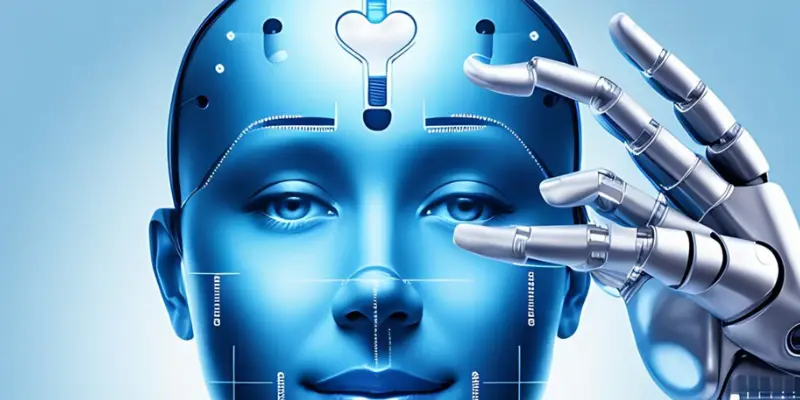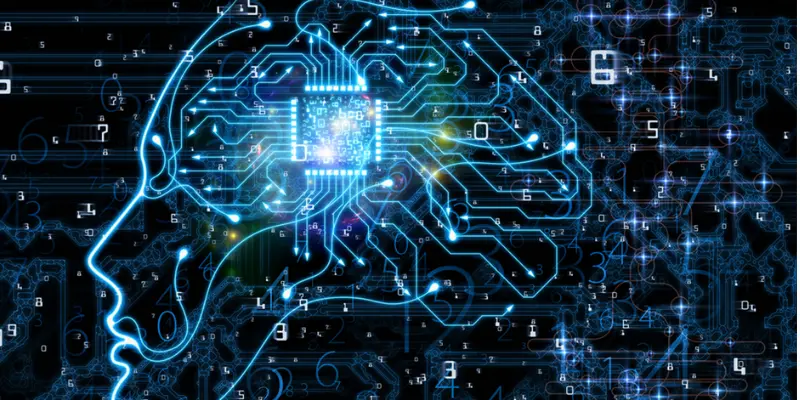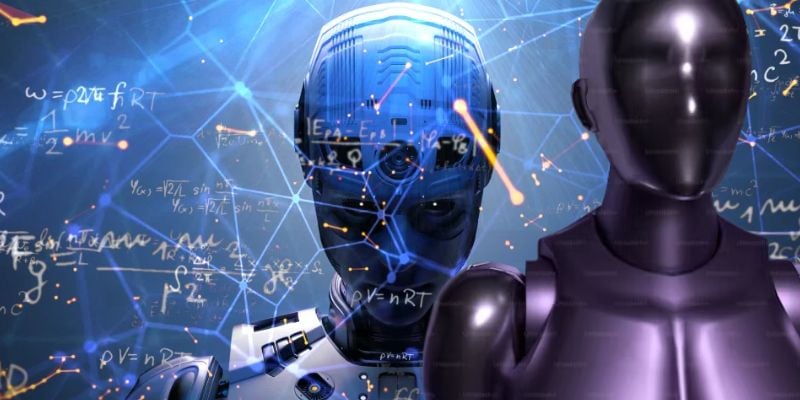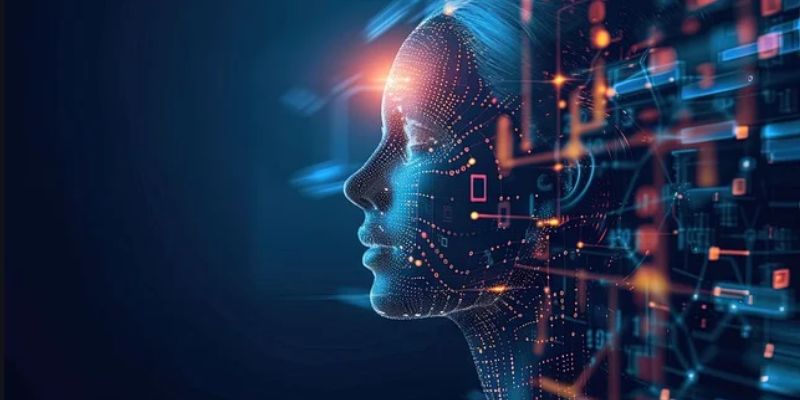Since its introduction, Machine Learning (ML) has evolved into an impressive technology capable of revolutionizing many areas. Thanks to digitization in businesses around the globe, development demand is skyrocketing and shows no sign of abating anytime soon. Machine Learning Development Services has transformed how we do things by making processes more straightforward, faster, and reliable. ML is emerging as a powerful driver of technological innovation across various sectors such as finance, healthcare, retail, and more.
What lies in store for machine learning in this rapidly exploding sector? This article will examine recent trends and predict how ML companies might alter our world over the coming years. Get ready for an exhilarating adventure into the technology currently used and its possible applications!
What Is Machine Learning?
The fundamental concept behind machine learning is the most essential branch of artificial intelligence, which enables machines to grow and develop through experience without being programmed. Programming traditionally involves telling the computer to complete a particular task. However, machine learning allows systems to discover patterns and make predictions or decisions independently. The need for intelligent technology increases as machine learning becomes an integral element of various applications, ranging from recommendation systems, image recognition, natural language processing, and autonomous vehicles.
Read About: Implementing Machine Learning Solutions: Comprehensive Guide For 2024
Impact Of Machine Learning On The Future
Machine learning's impact on the future is significant and vast. From revolutionizing industry to enriching the quality of our lives, machines are poised to create profound changes in the world:
Increased Efficiency And Automation
Machine learning algorithms are adept at processing large quantities of data quickly and efficiently. This resulted in increased productivity and efficiency across various areas, including finance and manufacturing.
Job Transformation And Skill Requirements
Although automation could result in the loss of some work, it also opens the door to opportunities focused on developing and maintaining machine learning algorithms. Workers will be able to change the environment by learning new skills.
Enhanced Decision-Making
Machine learning allows enterprises and businesses to make informed decisions, discover patterns, and gain insight. This can lead to better strategies, improved competitiveness, and more intelligent decisions.
Innovation And Product Development
Machine learning drives innovation by creating intelligent items. From assistants that can be activated by voice to recommendation systems, companies use machine learning to keep ahead of the curve.
Customized User Experiences
Since machine learning algorithms study user behavior patterns and preferences, they can provide customized experiences in various areas, such as shopping online, entertainment, and social media. This can increase user satisfaction and involvement.
Machine Learning Trends In 2024
12.webp)
Machine Learning Development is continuing to grow in a new and exciting direction. This segment will look at the leading developments and machine learning trends predicted to influence the market by 2024.
Multimodal Machine Learning
The first item on our list of 2024's machine-learning technological trends is multimodal machine learning (MML). MML draws on the diversity of our environment, taking in the many ways we interact with our world. Using multiple modes, AI models can capture moments with dimensions and breadth of the human experience. In particular, it combines images with audio or labeling them with text so that they are more easily recognized.
Google DeepMind made waves with Gato, the multimodal AI platform that can perform tasks such as visual sense, comprehension of language, and robotic movement. In the meantime, researchers are looking for ways to mix different modes to improve everyday tasks, such as comprehending the meaning of documents. This is extremely useful for healthcare professionals. AI algorithms developed using multimodal tools such as machine vision and optical character recognition can increase the quality of displayed results and make medical diagnoses more accurate.
In addition, hiring and training data science experts with expertise in various areas, including natural language processing or techniques for machine vision, is essential for making the most of MML's capabilities. Even though MML is still an emerging field that has not yet been developed and will be improved in the years ahead, there is a consensus that it is the most critical factor in achieving universal AI. It's an exciting field in which machines attempt to comprehend our world like we do.
Natural Language Processing (NLP)
Natural Language Processing is one of the most popular AI and machine learning developments 2024. AI technology will make the process involving language smooth and easy. It eliminates the need to manually type content using human-language algorithms that can interpret, manipulate, and produce output in an automated way. Nowadays, companies benefit from NLP applications such as text translation, language, and sentiment analysis. AI and ML experts are developing a variety of methods of interaction that are unlike the interactions of an individual human being, which can help businesses explore the possibilities of NLP. Different business industries utilize their AI-powered capabilities to improve a variety of tasks.
Foundation Models
Over the last few years, the Foundation Model has emerged as an incredible source of artificial intelligence. It has captured the interest of many. The best thing about it? Its rise to fame will not be over, as it will continue to rule the world until 2024. The foundation model is a deep-learning AI algorithm trained by many different datasets. Contrary to the specific AI models, which can only accomplish one particular thing, foundation models have been equipped to tackle all kinds of jobs and share knowledge.
Engineers aim to attain a new understanding level by teaching machines to look for patterns and gather information. Fundamental models can be beneficial for generating and composing content, including coding, translating, and providing customer support.
Low-Code Or No-Code Development
AI and ML are making their mark in all fields, from marketing and agriculture to banking. By 2024, these Software Engineering Tools will continue to drive the development of low-code platforms or platforms without code. This allows those without programming experience to swiftly and effectively create machine-learning models. Many managers see easy-to-use ML tools for less tech-savvy employees as vital to operating your organization smoothly.
Developing digital applications rather than hiring a team of data scientists and engineers is undoubtedly economical. This trend will prompt more businesses to opt for no-code and low-code alternatives, resulting in an exponential increase in companies using an ML model. The options for low-code or non-code solutions are endless. Businesses can use it for recruitment, security measures, fraud detection, customer-sensitivity analysis, and many more.
If you're thinking of high-quality, no-code, or low-code platforms, they can be equally effective compared to conventional programming frameworks. Demand for top-quality solutions is greater than the capability to provide them. It is growing by at least five times quicker than IT can keep pace with. Solutions that do not require code or low code bridge this gap and satisfy the demands. In the same way, low-code solutions allow technologists to evaluate their theories faster, thus reducing the time to deliver and development costs.
In the coming years, we will see the accessibility of already-trained AI elements. A more comprehensive range of easy-to-use development tools can allow developers to offer a superior experience when using low-code and non-code machine learning applications.
Read Also: A Guide to Machine Learning Developer in 2024
Computer Vision Or CV
It is a subfield of AI that allows computers to gain insights from visual information and images and act accordingly on that information. In simple terms, AI can help computers mimic human brains, and computer vision aids the computer in being able to "see." Consequently, computer vision functions similarly to how human eyes work. Human vision is based on the perception of visual information. It uses visual information through algorithms, videos, and pictures. Data is then processed and separated into kinds of categories.
Automated Machine Learning (AutoML)
In 2024, the machine-learning process is set to become more straightforward thanks to the help of AutoML tools. If you're an expert in data science and are interested in machine learning, this will interest you. AutoML platforms use machine learning algorithms and automation to allow you to develop and train, test the results, and implement models faster than manual methods. AutoML enhances the effectiveness of data labeling Custom Software Development and enables the automatic adjustment of neural network structures. Data labeling has traditionally been based on manual labor, which poses a substantial possibility of human errors.
Automating a large portion of the labeling procedure, AutoML significantly reduces the chance of mistakes and reduces costs. This makes it possible for companies to focus more on data analysis and allows solutions such as AI to be cheaper and more accessible on the market.
Edge Computing
This concept is part of distributed computing frameworks that bring computing and the origin of data closer to each other. Edge refers to processing data near its origin - allowing quicker speed and better outcomes. Edge computing means that data processing is done locally in real-time, more intimately, and close to the point where it originated. This reduces delay and the bandwidth needed for the transfer of data to a central site to be processed. This is a massive market; revenues are expected to be $59,633 million in 2030 at 21.2 percent. Automated retail and autonomous robots are among the most prevalent applications for edge computing.
Generative Adversarial Networks (GAN)
GAN has become popular over the last few years and is expected to be a significant force in 2024. GAN is an artificial learning system in which two neural networks compete. The generator generates fake data, and the critic or discriminator attempts to discern whether the data is genuine or fake. The competition results in the creation of high-quality synthetic data.
The area of GANs is rapidly growing and has shown unique capabilities for creating authentic content in diverse sectors. GANs can transform images into other images and create images that look exactly like authentic images. This is an excellent example of how GANs could revolutionize our thinking and play in generative modeling! The most famous examples of GANs include StyleGAN, which can create high-quality videos, and IMA. BigGAN is a specialist in producing diverse photos based on inputs from text. With the popularity of GANs, it is possible to see more accurate and innovative applications across various areas like art, entertainment, and fashion.
Explainable AI (XAI)
Although anyone can benefit from AI without coding skills, understanding the model's functions may be difficult. That's the point where Explainable AI (XAI) can help. Over the coming year, XAI will gain prominence as businesses seek ways to develop open and reliable AI. One of the significant obstacles of machine learning is "black box" issues, which must be solved first before success can be assured. Modern models, such as deep neural networks, are exact, but how they come to decisions is unclear. XAI hopes to fill this gap and make it much easier for humans to grasp the reasoning behind decisions and be confident in the outcomes.
The XAI platform has various possibilities in different fields, including healthcare, finance, and law. It could help banks make more educated lending decisions and doctors make diagnoses more confidently. Knowing how an ML model arrives at the answer is essential for transparency and confidence when dealing with these issues.
In 2024, firms are investing more in research and development to create models that can not only provide precise predictions but also present the reasoning behind their choices in a manner that is easy to grasp. Therefore, we can expect tools for XAI to be a component of the ML development process as firms strive to adopt ethical and transparent AI methods. This won't only enhance the transparency of AI but also aid in reducing biases and ensure responsible usage of AI technology.
Embedded Machine Learning
TinyML (also known as embedded machine learning) is concerned with running machine learning on different gadgets. It is used in appliances for home phones, laptops, and even smart home systems. As IoT technology and robotics become increasingly commonplace, the importance of embedded systems has increased. By 2024, the issues associated with Tiny ML will remain unresolved, requiring the most efficient and optimized pandas and reduced resources.
Applications embedded in the cloud are usually particular and have to operate within strict resource limitations, such as the limited power of processing and memory. Therefore, it is necessary to use specialized methods to optimize and compress models. However, as technology advances in hardware design and soft development, it is possible to see ever-expanding TinyML models handling complex tasks, such as speech identification, picture classification, and even predictive maintenance on various platforms.
The idea is that in 2024, we'll run machine learning algorithms on embedded devices that can make better choices and make better predictions. The embedded ML Development Services platform will be more effective than cloud-based solutions and has many benefits. It also includes reducing cyber security threats as well as reducing bandwidth usage as well as reducing the storage of data and transfers to cloud servers.
Metaverses
The Metaverse is the latest artificial intelligence and machine learning buzzword. We'll soon see the lines between our physical and virtual worlds blur as the Metaverse evolves. Many AI projects in the coming year will revolve around making virtual worlds that grow, change, and humanly engage with their users. The immersive environment can be utilized in games or training simulations. They could do remote work.
The Metaverse is becoming more integrated into our everyday lives, and we will likely see machine learning technologies contribute significantly to its development. This will include advancements in natural language processing, computer vision, and reinforcement learning. The Metaverse is an incredibly complex idea filled with infinite possibilities. When we investigate its options, machine learning plays a crucial role in shaping this virtual world.
In particular, the rise of virtual marketplaces that use blockchain technology for 3D internet-based trading is growing in popularity. These include marketplaces for virtual real property, digital art, online commerce, and games that earn you money, increasing the potential of game marketplaces. Avatars, virtual assistants, chatbots, and avatars utilizing AI are expected to be increasingly commonplace within the Metaverse. Intelligent agents can help users navigate the virtual world, making it engaging and personal.
Also Read: Actionable Insights To Predictive Analytics with Machine Learning
Machine Learning Is The Coming Future?
We will first address the trends and forecasts without explaining why machine learning is becoming more popular in the digital world. Its popularity can be traced to its ability to analyze vast amounts of data without software and make meaningful inferences or choices without external aid. Big data has provided several tremendous opportunities and problems. In addition, it has revolutionized sectors like financial services and healthcare, particularly in the context of artificial intelligence. However, other uses of this technology are nearly unlimited to various fields and beyond, giving a broad spectrum of the impact that transformational machine learning can have.
Recently, there's increased use of the capabilities of cloud-based machine learning. Many companies, vendors, or users will discover cloud-based platforms and cost-effective methods of using ML-based software. Cloud-based applications for the creation of ML offer three significant advantages: the ability to scale, accessibility, and automation. They allow developers to use sophisticated custom ML Model Development and not interfere with the critical infrastructure details. Additionally, ML cloud platforms include a variety of apps and tools that can be used to build already-built models, which results in faster development. Industry-wide acceptance of ML-based solutions has led to the creation of cloud-based platforms on which applications based on machine learning are built. As technology continues to evolve each day, we can predict that future platforms will be more complex and offer users more alternatives and skills to use AI.
Conclusion
The future of machine learning has enormous promise. It is shaping the future of artificial intelligence and impacting different sectors. From the most recent advancements and upcoming trends to their massive impact on business and society, machines drive new technologies and revolutions. It's only an issue of time until the latest trends in machine learning become normal. If you're interested in creating your ML project or integrating these new trends into your work, this is the best time to start.
When we enter 2024, advances in machine learning will continue to bring us new advancements, ethical issues, and collaboration between humans and AI. Whether you're a Machine Learning Development Company executive who wants to understand the potential of machine learning or a person who is interested in understanding how it is evolving and its possibilities. The path to the machine learning future is a thrilling investigation into the endless possibilities of technology.





.webp)







Share this blog